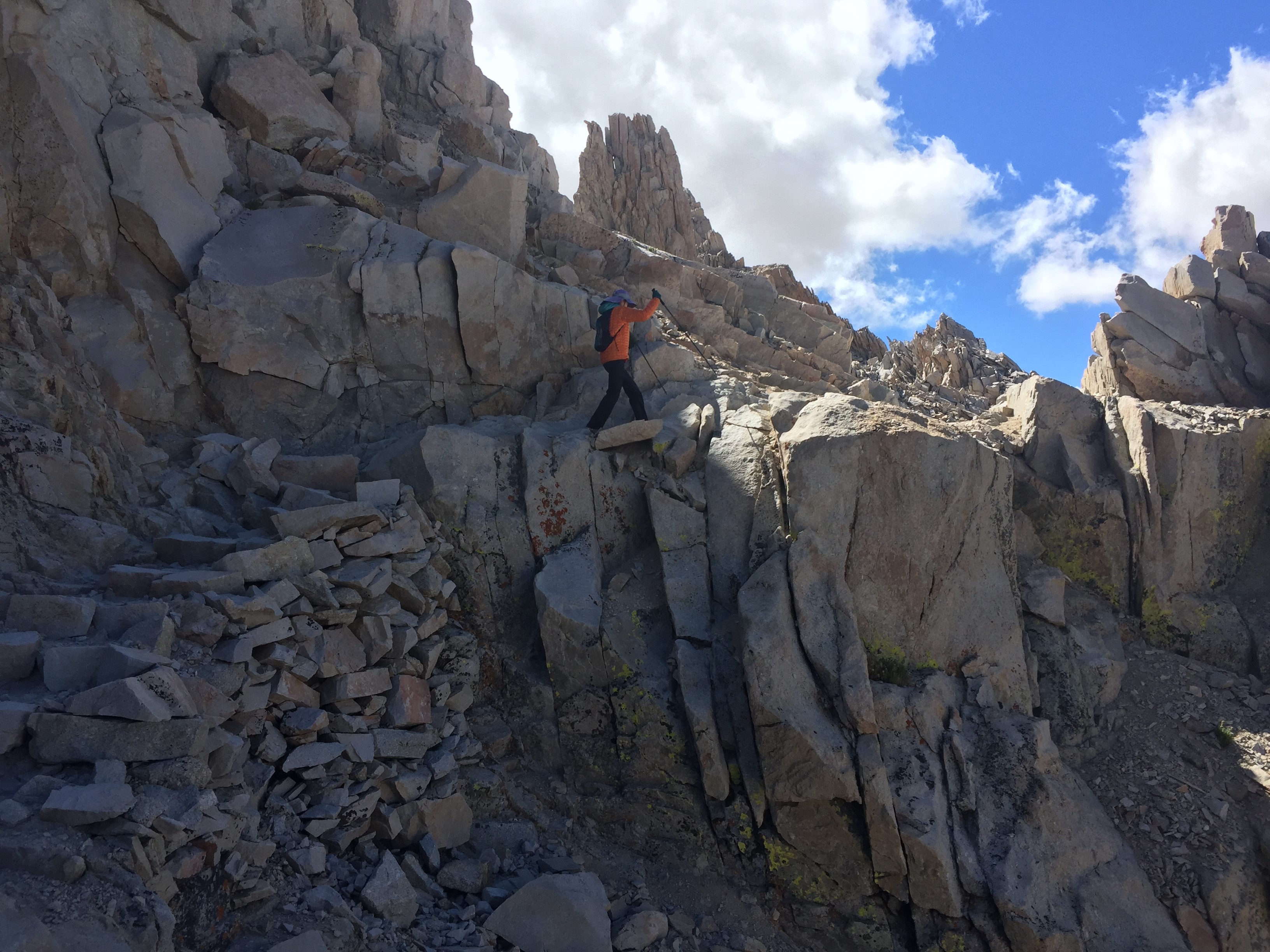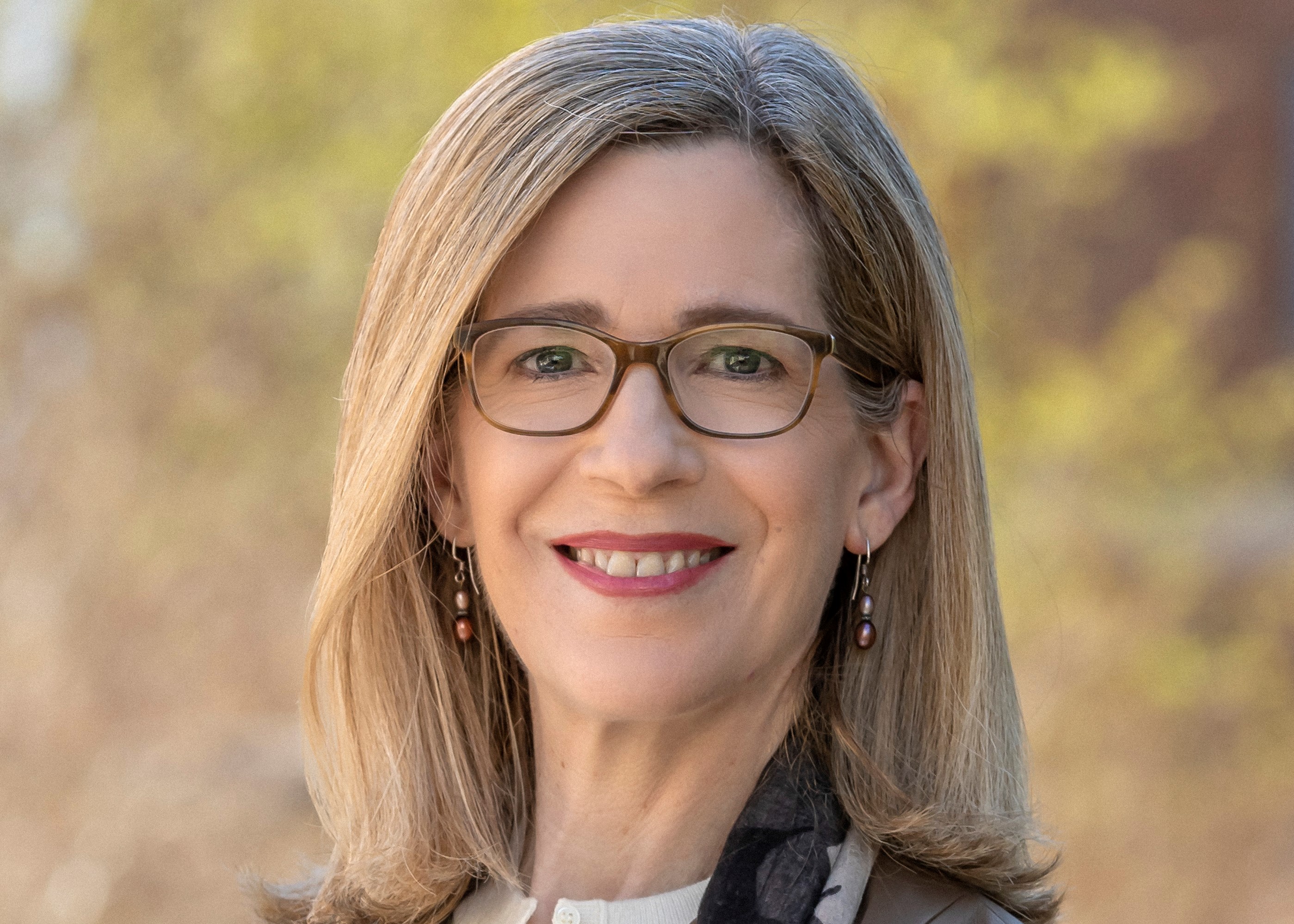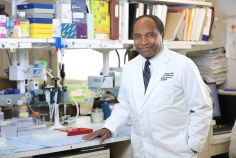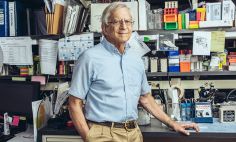Health Topics

Meet the Director: Lindsey A. Criswell, M.D., M.P.H., D.Sc., National Institute of Arthritis and Musculoskeletal and Skin Diseases
Despite major progress, much is still unknown about the nature of disease. Lindsey A. Criswell, M.D., M.P.H., D.Sc., Director of the National Institute of Arthritis and Musculoskeletal and Skin Diseases (NIAMS), encourages researchers she supports to think outside the box. Dr. Criswell talked with NIH MedlinePlus Magazine about how diverse ideas can help us better understand conditions such as autoimmune diseases (when the immune system attacks healthy cells by mistake) and initiatives that promote diversity and inclusion in research.
How does your background influence your approach to leading NIAMS?
When I was young, I was interested in nature and biology and how the world works. I was fascinated by the concept of nature versus nurture. All those things inspired me to initially pursue science and then genetics specifically. Then I pursued medicine so that I could help take care of people affected by rheumatic diseases (which cause inflammation of the bones, muscles, joints, and internal organs). But I also wanted to contribute to these fields as a researcher.
As my career and training evolved, I learned that working as part of a team was the best way to do good research. You need collaboration and a culture that recognizes contributions to keep people productive. You also need to have good leadership.
I was not initially drawn to leadership, but I realized that I had insights about the environment and culture and the values and priorities that help people work well together. Leadership opportunities came up, and someone had to do them. I cared deeply for the success of these efforts, so why not me?
How would you describe the mission and focus of NIAMS?
The name “NIAMS” clarifies the scope of the institute, which is very broad as it includes arthritis, the musculoskeletal system, and skin. That’s a lot of the body. Within each of those categories are many types of conditions, some that are rare and some that are common. Some appear earlier in life; others appear much later in life. Most of those conditions are influenced by social determinants of health, including some that are more likely to affect underrepresented racial and ethnic minority groups.
Even though most of the conditions NIAMS studies are not deadly, they have a profound impact on individuals, families, and our communities.
What is the most challenging part of researching genetics and autoimmune diseases?
One of the challenges is that conditions that affect humans are complicated. Even diseases that we think are caused by a particular infection, abnormalities, or variations of a gene are complex. They do not behave the same in individuals who are affected by them. So, even when we think we have a good handle on the root cause, many other factors influence who is going to be affected—how ill people become, their long-term outcomes, and how they respond to treatments all vary.
While genetics are important, they’re also very complex. Hundreds of genes contribute [to illness] in subtle ways and in ways that we don’t fully understand. New tools and technologies are being developed every year, which is fantastic, but it’s a challenge to keep up with how to use them. We’re constantly thinking in new and creative ways about how to answer some of these questions [about disease], how to solve some of these problems.
Progress requires teams of people with different backgrounds—clinical, data analytics, patient engagement. Pulling together this diverse team is hard, but it also makes work in this area fun and rewarding.
What would you like people to know about arthritic, skin, and musculoskeletal diseases?
It is important to make the public aware of these conditions and how to get an early diagnosis and timely treatment.
These conditions interfere with quality of life because they can cause tremendous pain, disability, and suffering. They are responsible for a lot of lost productivity, which has a major economic impact for individuals, employers, and the health care system.
We have a basic understanding of [these] diseases and conditions, but the way we define or distinguish conditions is based on incomplete knowledge of what causes them. We don’t have a perfect correlation between the biology of the disease and how we define it. That interferes with effective research. So, we really need to think outside the box and think creatively about the diseases and conditions that we study.
How is NIAMS helping to eliminate health disparities?
It’s striking how much some of the diseases within our mission affect individuals from underrepresented racial and ethnic minority groups or individuals with low socioeconomic status.
An example is lupus (an autoimmune disease where the immune system mistakenly attacks healthy cells). Lupus appears to affect individuals of non-European ancestry around the world much more frequently than those of European ancestry. But it’s not as simple as what continent your ancestors came from. Social determinants of health [include] things such as nutrition status and exposures to toxic factors in the environment—both of which can have an impact even in the womb. Educational opportunities and access to timely and high-quality [health] care—those factors have an important role in lupus.
Outcomes are affected by how quickly a disease is diagnosed, how effectively it’s treated, and the timeliness of the treatment. Even more difficult than figuring out how to understand these things is how to have an impact. How do we, as a health funding and training institute, impact social determinants of health? Can we have an impact through health care systems? If we can do that, what partners do we need to try to do that?
How do NIAMS initiatives support diversity, equity, and inclusion in the scientific workforce?
We are deeply committed to increasing the diversity of the workforce both within and outside NIH. The NIH UNITE effort launched last year addresses structural racism in the scientific community and across biomedical research.
In addition to supporting these goals, NIAMS is developing and implementing its own plans to make a positive difference. One example is a virtual training program by our Intramural Research Program called the InVTRO (Intramural Virtual Training Research Opportunities) program to make research opportunities more accessible for individuals from underrepresented backgrounds. We also have special programs such as our Diversity Supplement Program that provide additional mentoring, support, and professional guidance to researchers. We bring mentees together to go beyond what their principal investigator can provide.
Soon we will release a research grant funding program to target investigators either from underrepresented backgrounds or who have shown a strong commitment to diversity, equity, inclusion, and accessibility. Those efforts and activities are high priorities.

NIAMS Director Dr. Lindsey A. Criswell hiking Mount Whitney in the Sierra Nevada mountains, California.
What are some of your favorite things to do outside work?
I’ve really tried to model a balanced life. Hiking has gotten me through many years. It is a tremendous source of enjoyment for me. Sometimes it’s more ambitious, [such as] backpacking trips. I really enjoy getting outside and walking and hiking and enjoying nature.
My go-to spot for serious hiking on the West Coast are the Sierra Nevada mountains. I’ve hiked all but six miles of the Chesapeake & Ohio Canal towpath [which runs through Maryland and Washington, DC], and I already have a hiking goal for next summer: I want to hike the 115 miles of the Appalachian Trail that goes through Shenandoah National Park in Virginia.I also have a large extended family, including twin 22-year-old daughters. A lot of my free time is spent with and supporting my family.
More research from NIAMS
Back Pain Consortium Research Program
The Back Pain Consortium (BACPAC) Research Program aims to improve our understanding of chronic low back pain. BACPAC will look at how different factors contribute to the condition and how those factors appear in individuals, as well as treatment options other than pain medications. NIAMS hopes this will lead to more personalized treatment for chronic low back pain. BACPAC is part of the Helping to End Addiction Long-term® Initiative, or the NIH HEAL® Initiative, as a response to the national opioid crisis. Read more about the project.
Restoring Joint Health and Function to Reduce Pain
The Restoring Joint Health and Function to Reduce Pain (RE-JOIN) Consortium is also supported by the NIH HEAL Initiative. RE-JOIN research teams are trying to understand joint pain—a common reason people with opioid use disorder begin taking opioid medications. Teams will try to map out the body’s network of sensory nerves that connect to the knee joint and the jaw joint, and researchers will study how this network changes with age and disease. Read more about this project.
Molecular Transducers of Physical Activity Consortium
It’s long been known that exercise is generally beneficial to human health. But what kind of exercise is right for the individual? How does exercise affect people differently based on their age, health condition, fitness level, or sex? The Molecular Transducers of Physical Activity Consortium (MoTrPAC) aims to answer these questions. It also seeks to find out whether exercise can do more harm than good in some circumstances. MoTrPAC researchers plan to map how molecular changes occur in the body due to exercise. Learn more about this project.
*The Helping to End Addiction Long-term® Initiative and the NIH HEAL Initiative® are registered service marks of the U.S. Department of Health and Human Services.







